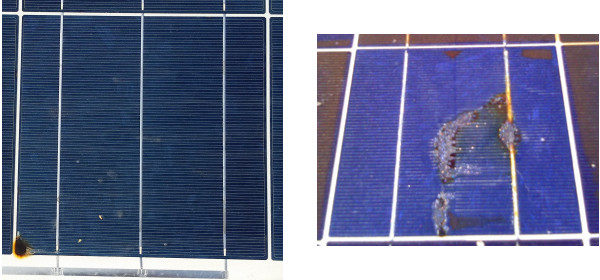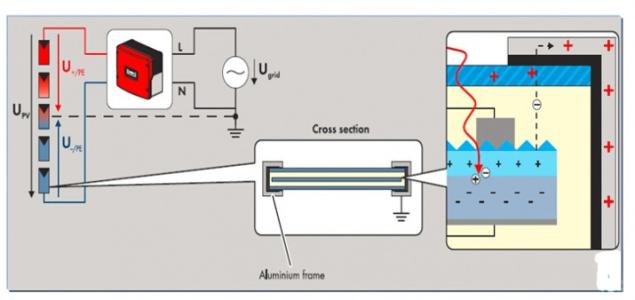On the authority of International Electrotechnical Commission (IEC), "Hot-spot heating occurs in a module when its operating current exceeds the reduced short-circuit current of a shadowed cell or group of cells within it". It has many presentations and underlying causes and leads to concerns for owner and operators such as mechanical damage, internal module failures.

Solar modules are usually installed in large areas of land or on the surface of large water area with adequate sunlight exposure. Having been used for a long time, inevitably, the modules will be shaded by objects such as birds, dust, leaves. In addition, if the spacing among the arrays of large-scale solar cells is not appropriate, the cells themselves can shade each other too. The current and the voltage of some of the battery cells will change, because the solar modules are partially shaded. As a result, the product of the current and the voltage is increased, thereby causing a rise in temperature in particular parts of the solar cells.
Defects in some of the battery cells may also cause heating during operation. This phenomenon is called "hot spot heating". When using the cells, if the heat generated by this effect exceeds a certain limit, the solder joints on the modules will melt and the grid lines will be destroyed. Consequently, all the PV modules will be scrapped. Based on authoritative statistics, hot spot heating reduces the actual service life of solar modules by at least 10%.
Although the effects of shading has been taken into account during the process of installation and protection devices have been installed to diminish the negative impact of hot spots, hot spot heating is unavoidable. To ensure that the solar cells can be used for a long time under specified conditions, it is necessary to test the modules with specific technical standards every now and then to determine its ability to withstand the effects of hot spot heating.
PID (Potential Induced Degradation), as the name implies, is a nasty phenomenon that negatively impacts on solar photovoltaic modules. According to Wikipedia, it is caused by so-called stray currents and may cause power loss of up to 30 percent. And in most ungrounded PV systems, the PV modules with a positive or negative voltage to the ground are exposed to PID. Specifically, ionic migration comes with the high pressure between the solar cells and their grounded metal frames, leading to the performance degradation in photovoltaic modules. As the "top killer" of photovoltaic power generation, PID has huge implications for the output power of solar modules.

There are two main reasons accounting for the PID effect on PV modules: firstly, the original electric field of the PN junction changes or there are other current channels, which results in a decrease in photo-generated current that flows through the PN junction. Secondly, since being affected by ionic migration, the material performance of the solar modules have undergone irreversible changes. To be specific, their output power is less than that of the original manufactured modules. At present, considering what causes PID, although the effect can be mitigated or avoided from modules and systems, it will finally reflect on the solar cells. Therefore, it is recommended that solar cell manufacturers carry out more comprehensive research on their products. (Editor: Claire Jeawin)